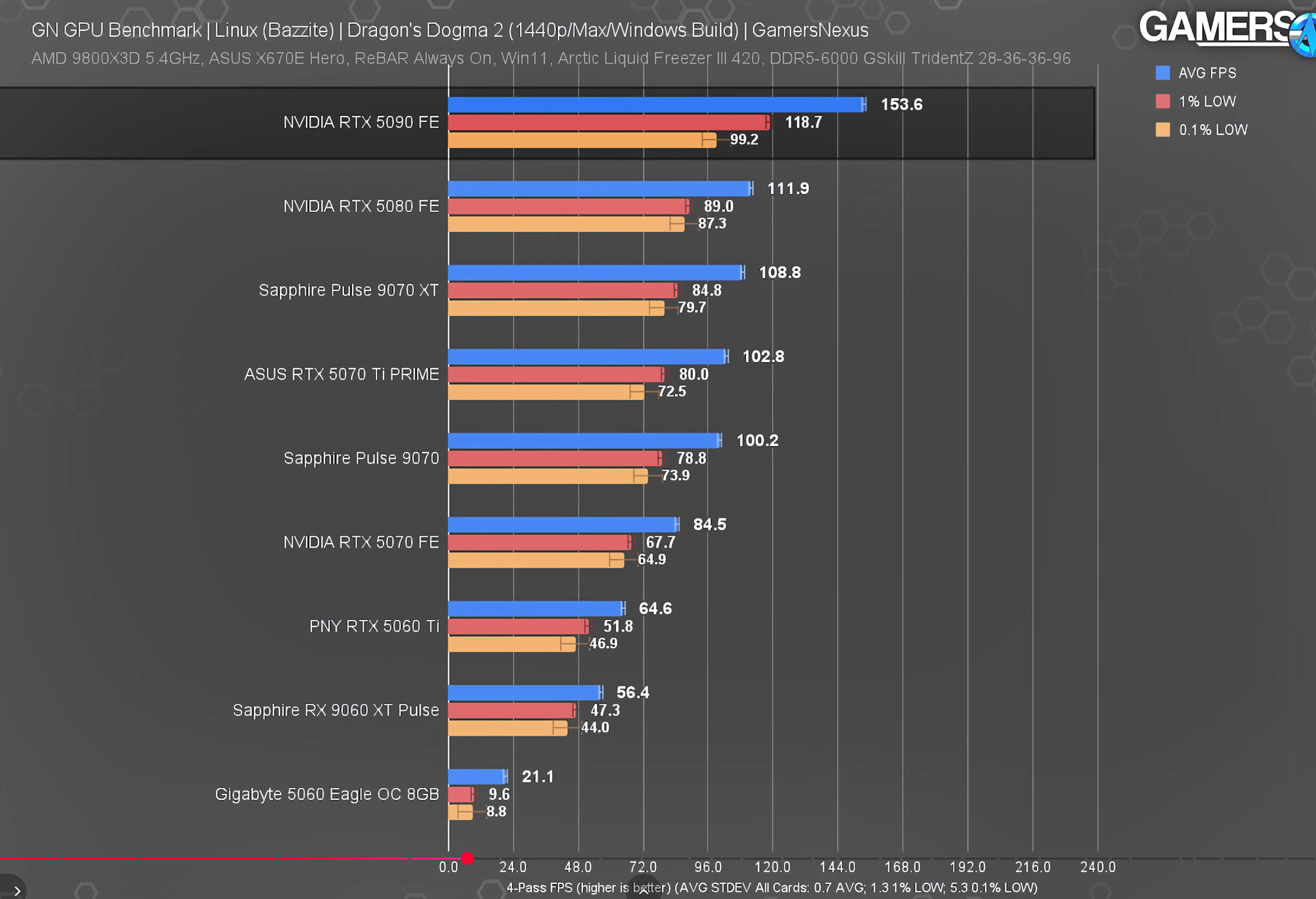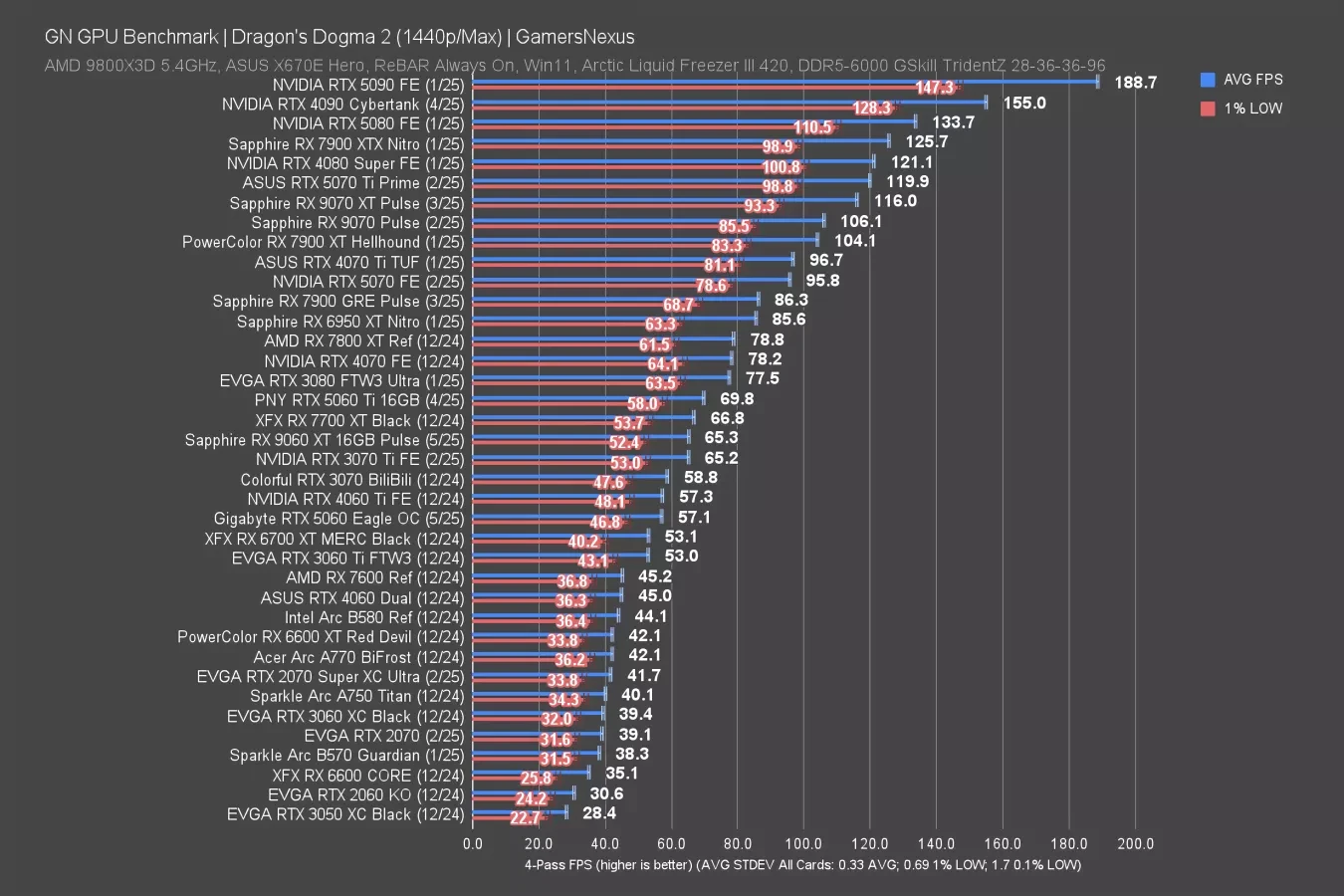How is Bazzite with Waydroid?
I am looking to change my Sons laptop from Mint; he is using Minecraft education for some things at school. It is an older dell laptop; but has plenty of power for a 10yo kid.
I just threw it on the family laptop to give it another life. So far it’s great, and I would honestly suggest it as a regular user desktop system. My kids will be fine with it, so would my mom, and any of my non-tech-savvy friends.
Personally I probably won’t switch from my beloved LMDE, but I’m also a greybeard nerd who’s set in my ways.
that’s how I started 15 years ago… put it on a netbook just to try it and loved it… showed the wife and she said “it’s coooler than windows” (loved her more from that day)… windows never entered my house since
I’m so happy to see some big channels doing these Linux tests. I know it’s probably way more difficult since there are thousands of distros to try!
You don’t need to test every distro.
Honestly you could capture 90 percent of the market with just arch and Debian/Ubuntu.
You could add 2 or 3 of the gaming focused distros for comparison however since they tend to be built on top of the two above things are more likely going to vary based on configuration more than which distro or de you are using.
They don’t test all the windows varieties either. 10, 11, 23h2, 25h2, home, pro, N, …
Lets be real, Ubuntu/Arch is the way to go. Debian is just not present on gaming set ups, Arch is close to what Valve is doing and Ubuntu has like 69 downstream distros.
Debian is just not present on gaming set ups
You are mistaken.
It’s not popular in that arena, but it’s definitely present.
I guess my Steam install and few games on Debian are not present.
To be fair, they’re not AAA games, so they’re just not real games anyway. Gaming is for people with bleeding edge software and super recent hardware, obviously. /s
Ubuntu is in the same boat, 90% of its users are using the LTS version.
Arch isn’t that good of a choice either simply because it’s a DIY distro. It’s not meant to be complete out of the box and may require tweaks and making choices that Gamers Nexus is explicitly trying to avoid.
I appreciate the work they are putting into this. I think we will see more linux adoption in the future as microsoft keeps doing all the things it has been with windows 11.
I’ve noticed a lot more talk about Bazzite lately and I’ve been wanting to at least give it a try as a daily driver. I’m not us gaming though I do dev work and what have you. For people on Bazzite that also do that, how is it? easy to set up for that like say using Doom Emacs or what have you?
distroboxes are incredible and distrobox expose is legitimately the coolest thing I’ve seen in ages. I have protonge and proton tricks which every game uses installed in a distrobox, and via distrobox expose my host can use them without any any other setup. it’s awesome.
same thing goes for any of my dev tools. i was just shocked about the ability to expose commands and have it be seamless enough for games.
Dev work in the uBlue family (and yes I use bazzite for dev) leans heavily on distrobox (think development containers). Took a bit to adapt but now I think it’s the ducks nuts. Because you decouple the dev environment from the main, immutable OS you get a lot of wins, especially if you work with a lot of different projects as you can setup distroboxes specifically for each. AI code that only works with specific drivers / libraries / python with instructions only for Ubuntu or Arch, no worries, make up a distrobox, when you’re finished archive it and spin it up later if needed. If you’re only working one project on say LTS or something it’s going to be much less of a win, but for the flexible developer it’s a godsend.
As to doom emacs or whatever, I have a post install script for distroboxes that sets up my preferred environment for the big 3 (Fedora, Arch, Ubuntu), it’s not hard. Very much a kill your darlings philosophy.
ETA Because of this workflow it really doesn’t matter what the host OS is, so it may as well be something I can game on, and I’m fond of the Fedora relative stability with sharp, but not bleeding edge.
Bazzite has a developer version. Not sure what the differences are though. It’s on their site.
If IDEs from Flathub and CLI tools from Homebrew serve your needs, no further action is required. If deeper system integration is needed for VSCode (ie. devcontainers), Docker (ie. Podman is not sufficient), etc - then see below specialized images.
There is a whole Bazzite for Devs page that mentions Bazzite-DX for development to handle some things like devcontainers: https://github.com/ublue-os/bazzite-dx
Their main website also says:
Running a game, a development environment, a container for your Jellyfin server, or a utility only available on the Arch User Repository? You can rest assured it works here. Bazzite is developed on Bazzite.
At the end of the day, its an immutable fedora distro. Which may serve your needs. or may not. And bazzite’s primary focus is on gaming. It will most likely work (given a few criteria), but it may not given that is not their primary focus.
I have Bazzite on an HTPC. It’s Fedora but you can’t use DNF only Flatpak. I personally wouldn’t use Bazzite on my main PC. The gimmick with Bazzite is it’s ideal for entertainment appliances, it’s as close to SteamOS you can get forking Fedora Kinote.
Bazzite is part of the Universal Blue project, which is basically three distros based on Fedora Silverblue.
Bazzite - gaming focus Aurora - KDE desktop Bluefin - Gnome desktop
Look up the universal blue site and you’ll see more about them.
I use Bazzite for my HTPC (AMD NUC).
For a “set it and forget it” gaming console experience? It is awesome. It feels like I already have a GabeCube under my TV (that I bought for probably half the price…). And when I have to do more complicated things than “run the update once a month”, I just ssh in from either my desktop or laptop.
But… it is an immutable/atomic distro. So if the packages you want to add are flatpaks or appimages? You are probably fine. Otherwise? You get into a mess where you are adding packages to your layers (?) and kinda feel like you are playing with fire. I did that to get iperf3 installed to test some networking upgrades and it was mostly painless but it was also a really bad experience versus
sudo dnf install iperf3. And… even on machines where I spend 90% of my time ssh’ing into servers, I still tend to want to install a good amount of local packages as a developer.So my suggestion would be to stick to Bazzite for gaming first platforms and continue to use whatever distro you like (Fedora for the win!) for “real” computers.
Also, if you aren’t as annoyed by atomic distros as I am, I would still be wary of Bazzite. They have a lot of different SKUs and I don’t care enough to try to parse what each one does. But the common use case is to basically treat a machine like a Steam Deck… which means you boot into Big Picture with essentially no login screens or a REALLY insecure pin code. And then you switch to desktop mode with a single click.
There are ways to harden that (and very much an argument of whether you need to harden a machine in your home). And Linux, generally, has very good protections by actually requiring auth for
sudo. But I already feel sketchy that I am logged into Steam/GoG on a box with almost no protections. But I also live in an environment where I don’t have to worry about someone buying 10k in fortnite bucks on my TV.You can use distrobox/distroshelf to set up a container with a regular distro and install packages in that instead of layering; if a package installs a GUI application you can export the application and it will show up in your applications menu.
And you can similarly do most/all of your dev work in a container that you spin up with a
podmanalias (fuck hashicorp with a rusty metal pole but damn if Vagrant wasn’t awesome). Hell, there are a lot of arguments that you should.It inherently becomes a question of what your primary use case for a machine is and how often you spend fighting it to accomplish that. And, personally, I run Linux so I DON’T have to fight my OS. Which… is really weird when you think about it but holy crap Windows and Mac are annoying.
Immutable OSes are amazing for corporate environments and HTPC/Gaming computers are another solid use case. But if your primary focus is whether you can be a developer (as indicated by the doomemacs ask)… you are gonna be cranky.
The solution for packages is do it in a container, that way its easy and doesnt involve layering more stuff.
as i understand it, bazzite is very gaming-oriented.
Bluefin and Auroa are for you, changed how I program and organise, our you can make your own template and just pop everything you’re missing in the containerfile similar to how nix pkgs works
I use Bazzite for devwork too, I do use distrobox though which allows me to get proper dependencies without layering more onto the system image.
See also:
We have Linuxbrew. Homebrew but for Linux. Battletested by countless devs previously using MacOS.
Come join us.
I’m not us gaming though I do dev work and what have you
Bazzite isn’t really for you. Bazzite is a gaming 1st distro. You probably want a more normal general use distro.
Don’t agree with this. I do dev work in bazzite without any issues. Just spin a distrobox and that’s it. Also it’s better that usual dev environments, just like a python env is better than using native os python.
Just because you can doesn’t mean you should. There’s better distros out there.
Especially when you have no interest in gaming.
Not true. I can even develop Linux device drivers on it after figuring out modules signing. Basic stuff if you ask me. Bazzite is as good for developers as any other distro.
If you don’t mind a learning
curvecliff, NixOS is great for development, and I haven’t had any issues gaming either.I initially installed Bazzite when switching to Linux, but the development experience made me switch to Kubuntu after a few days. I’ve had various problems with development tools which probably related to Bazzite’s immutability. For example I couldn’t get Godot to connect with a code editor. I’m sure there were solutions to those problems, but I haven’t regretted switching. Development works great now and gaming feels just as good to me as it did on Bazzite.
Look up Bazzite DX. Its a developers oriented version. Other than that, distrobox is amazing for creating containers for your projects, allowing you to have a sane and stable dev environment
Bazzite comes with no dev tools pre-installed and a lot of gaming-related stuff.
Of course you can add what you need through flatpaks, containers or image layering, but why not choose a distro aimed at dev work in the first place?deleted by creator
solving anti-cheat would basically seal the Dingus
It’s solved, they just refuse to enable it
The way I solve anti-cheat is by never playing games that require it.
deleted by creator
You’re going to get dogpiled because you’re generalizing and people are calling you out for that. All your edits and bluster, when you could go back and just say you like a specific subset of games that are made by devs that are just lazy/shitty. Voila, maybe then everyone would stop replying with the same comment!
Or, ya know, just keep digging that hole. It’s funny either way.
Has an uninformed, awful take, that belittles someone else… then cries the victim when people call him out. Nice
If you need to clarify something to someone in a reply… Also add your clarification as an edit instead of “Edit: OMG read my reply to that other guy”.
Might save your inbox from the… ~3 replies that you apparently can’t handle.
Sidenote: I’d hate to play multiplayer games with someone so fragile.
I am just replying to annoy you. ily
The majority of multiplayer games do not require kernel level anticheat. I play almost exclusively multiplayer games I just don’t play the dumb mainstream ones like fortnite or destiny
deleted by creator
Kernel ac is pretty much the only one that doesn’t work. The vast majority of other anti cheats work perfectly fine under proton.
Like I said I play almost exclusively multiplayer games on Linux if that wasn’t clear, the only ones that don’t work are things like valorant, destiny, fortnite that are using kernel ac
No, plenty of multiplayer games dont have anti cheat systems on the client side lol.
Weird you gotta spew blatant lies and misinformation just to service corpo dick.
Plenty of multiplayer games and MMOs are playable on linux. and they prove you don’t need invasive, spyware level access for anticheat.
deleted by creator
I’ve never seen someone buckle under so little pressure
So what? I’m at work and I don’t have the mental energy to address all this shit, on top of my job duties.
I’m not required to engage if I don’t feel like it. You’re just a bunch of random sticklers and pendants on the internet, and as such, I don’t owe any of you a god damn thing.
My own mental health comes first. I regret even opening my mouth.
You could have just said you were wrong and moved on. Getting all worked up seems to be taking up a lot more energy.
What? You can play multiplayer games np lol. It’s just shitters like riot games, tarkov, GTA, and those other corpo fucks you can’t play on because they want to harvest your info.
I’m about to delete my comment cause you’re the third person now to respond with basically the same thing and I’m tried of clarifying myself. So just go read my reply to the first person who said something similar to what you did.
If the anti-cheat is client-side, that’s a solved problem, thanks to avoidance.
I’m of a few minds on this.
First and foremost: I am a huge Gamers Nexus fan and think Steve et al are a great complement to Wendell when it comes to the decade of Year Of The Linux Desktop. And I love that they actually addressed the elephant in the room where… quite often you actively don’t want to use the linux binaries for a game.
But I do think that having Linux as the second class benchmarks are inherently going to cause problems. Assuming they stick to doing a batch every couple months, that… okay, ain’t nobody actually buying hardware unless they have to. But still. And this was apparently collected during one of the months where nVidia was a complete shitshow. But Dragon’s Dogma 2 completely breaking is the kind of thing where… look, I became WAY too aware of exactly how denuvo registers a machine while I was debugging that. I was able to get DD2 to run beautifully on my PC but… as a HUGE DD1 fan even I think I wasted my life doing that (would do it again though).
But I keep thinking of how many Influencers have done a variant of “tech isn’t fun anymore”. And… it kind of isn’t. But from the editorializing from Steve et al over the past year or so, it is clear they are excited that things are actually changing sometimes week to week and so many of these problems are ACTUALLY solvable by users. Sometimes it is trivial (check protondb for what settings) and sometimes you find yourself going down a rabbit hole of just how bad the Nioh 2 PC port actually was.
I suspect this ends with the vast majority of outlets embracing “XBOX For PC” in a year or two… and Steve looking even more like the crazy old man of PC reviews. But I do think this will go a long way towards helping the fence sitters get away from MS.
when it comes to the decade of Year Of The Linux Desktop
🤣🤣🤣
Quarter century, but who’s counting really 😆
Damn Wendell actually got me thinking of CachyOS with his shameless plugs 😁.
I would mostly do gaming but there are those occasional times where I just need some random functionality which I perhaps may miss with Bazzite.I’ve been on Cachy forever, across two PCs.
It’s fast. Its maintainers are great. It has everything, preconfigured sanely. It Just Works.
…I don’t see myself switching distros ever again. I can’t think of a reason to, nor anything I’d want from others.
I enjoyed cachy os when I tested it out. I’d like to see how it compares to Bazzite tho. I thought I tried an immutable is years back and it annoyed the hell out of me but I can’t remember.
What kind of functionality do you use on bazzite specifically?
Gaming will be the drive to get more people to use Linux and I’m enjoying the trajectory it’s on.
Is there really zero windows benchmarks for comparison in this entire video?
Yes. They were very concerned about head to head comparisons because the tools for measuring FPS and stuff works differently.
I’ll also add on that there are a LOT of blog posts and youtube shorts about “Game X is 20% faster on Linux than Windows!!!” that everyone loves to regurgitate. And the reality is that it was a single outlier or it all boils down to Steam distributing “good enough” shaders to Linux but not Windows (and let’s not get into the weeds of why).
Whereas GN, especially since “All New Data” a few years back, have very heavily focused on reproducible and “good” data. That is why Steve basically apologized for not having error bars or having what looks like messy data for a few of those runs. And they’ve done entire videos on their testing methodology that often includes MANY runs to normalize out the noise.
So without being able to explain exactly why? I doubt they will EVER put Windows and Linux data on even the same page of their website. But… someone who cares will be able to see trends.
And yet there’s still LTT forum idiots posting on how “Steve is just running a drama channel”.
GamersNexus’ normal GPU benchmark videos are to help gamers compare GPU performance on various games to determine what they should purchase for their needs. With this new video, they are now providing the same service for Linux Gamers going forward.
The goal of this video was not to compare Windows performance to Linux performance. There are videos that exist which do that, if that is what you’re were hoping for.
If we want to convince the windows crowd that linux is a viable alternative, we really need the comparison to show the difference isn’t so bad.
I’ve seen the ancient gameplays video you linked, but there is very little out there for linux vs windows benchmarks that are of high quality. Most videos tend to be incredibly amateur. I really hoped they would throw in a couple of composite charts with windows vs linux results since GN has all this data already and for a simple summary it shouldn’t have been much work at all. Instead I need to look at multiple videos.
What it needs is for the rig you have now to be basically playable. If it’s playable on Windows, it should be playable on Linux. Losing a couple of fps is frankly not a big deal if it’s still overall playable.
Setting aside some anti-cheat issues, it mostly is. Nvidia has some abysmal inconsistencies in a few titles.
I know first hand that if you have a great rig, things are fine. 9800x3d + 9070xt can play anything, anticheat willing :P
It’s still important to see the difference though imo. The more it becomes a meaningful metric the more software developers will consider it. Especially if the western gaming publications start publishing it. It’s the metric of “Is this game shit because the devs haven’t bothered to look at how it performs in wine?” ProtonDB is a start, but still lacks non-steam titles and it isn’t prominently shown in places where it ought to be, like steam store pages. The closest thing to a linux compatibility check on a steam store page is if it’s supported by the deck. Tons of games I play aren’t really suitable to the deck but run wonderfully on linux.
Plus the 5060 example is a good illustration as to why it’s important to see this stuff. On at least one game it’s practically unplayable on linux, but runs basically fine on windows at the same settings. These scenarios are exceedingly few, but the cheaper, weaker GPUs are the ones that sell the most.
If linux market share continues to increase we will see more and more linux native builds and the situation will improve substantially. It’s already a wonder that wine works as well as it does, way better than just a few years ago anyway.
I’ve seen the ancient gameplays video you linked, but there is very little out there for linux vs windows benchmarks that are of high quality.
The video I linked is 2 months old, only focuses on graph data (no gameplay videos) across both AMD and NVidia cards and multiple distros. It’s quite high quality IMHO. Are you confusing it with something else?
EDIT: I just realized you’re referring to the name of his youtube channel. D’oh!


big bars are from the video. small bars are from https://gamersnexus.net/gpus/amd-needs-just-shut-amd-radeon-rx-9060-xt-16gb-gpu-review in july
I do want linux to gain market share, but this stuff is important. Eagle 5060 can’t even run Dragons Dogma 2 really on linux at 1440p max settings, but can handle it on windows at 1440p max settings. Doesn’t apply to me… but this is why we need to see the parity.
9070xt seems fairly close, compared to nvidia
FWIW, Gamers Nexus specifically said during the video multiple times not to compare the results between Linux and Windows as they aren’t apples to apples in data.
Sure, and you can never have something be apples to apples when the entire architecture simply works differently between the two, unless you have some kind of external hardware monitor.
It doesn’t matter though. Imperfect comparisons are ten thousand times better than no comparisons at all, especially when entertainment is on the line!
Only a dead man gets in between me and my entertainment.
Sir, this is a funeral.
AMD is more stable in games where Proton/Native Linux builds have weird issues, sometimes leading to a 9070xt leading a 5080 (even beating a 5090 in like starfield but like, lol.) Raytracing still heavily prefers Nvidia.
Does not directly compare to windows benchmarks. Low V-ram causes failures. Some native versions for linux are actively worse than running windows through Proton Loading Shaders before launching game can take long (longer on Nvidia cards), and can be required very often.
Suggest watching the last 10m where they talk about these issues if you don’t have time for the whole video.
https://www.youtube.com/watch?v=ovOx4_8ajZ8&t=2746
I’m not sure I quite understand the issue Steve has with things updating when adding new cards.
Sure, updates during a single benchmark series is a problem but what is the issue with the system being updated for the next benchmarks?
Proton/amdgpu/Mesa receiving updates is no different than installing newer “Game Ready” drivers when a new GPU comes out.
I assume they don’t go out of their way to install older (potentially incompatible) drivers on Windows just so they can compare two separate benchmarks.
Besides that, after disabling Flatpak and rpm-ostree updates in Bazzite, the only remaining variable is Proton. Which should be easily fixed by manually copying a fixed Proton version to their compatibility tools and using that.
Without re-testing their entire suite of cards for every new card review (which is cost prohibitive), performance changing from updates would make the comparisons between cards less useful, as it cannot be determined if the newer card being tested is better or worse purely on the merits of the hardware itself, since newer software may be artificially making it look better or worse than the tested cards that came before, and thus the actual integrity and usefulness of the testing comes into question.
They are trying to assemble a like-for-like dataset that doesn’t require their entire catalog of cards to be regularly retested to ensure that it remains like-for-like. Keeping all the software the same across tests ensures that they can add new data piecemeal and still retain an apples-to-apples comparison.
That makes sense.
So the best option seems to be to note updates for newer cards down until the automated testing can be done on Linux as well.
AFAIK, It’s not an issue of automated testing, and I don’t believe they re-test all their cards on Windows with every new review either. Instead, they maintain the same versions of software on Windows as well until enough time has passed and enough updates have piled up that they do finally re-test everything with new games to create a new dataset to compare against. They’re trying to do the same methodology on Linux.
Instead, they maintain the same versions of software on Windows as well until enough time has passed and enough updates have piled up that they do finally re-test everything
I’m not that involved with their testing procedure but doesn’t that put newer cards at a disadvantage?
They lack any sort of driver optimization if the release drivers are never installed.
That’s a good point. I went back to the video to rewatch it, and turns out I totally missed where they said they only freeze things during a testing phase, then unfreeze it after they’re done and allow updates to commence as normal.
They mentioned that due to Linux receiving more frequent updates often with meaningful performance improvements, they’ll have to throw away older data and re-test more often on Linux, as Windows doesn’t really change much in performance between updates. So I would guess that they would use release drivers with new cards, and likely would only re-test their entire suite if the release driver also gave a big performance boost on older cards.
A short summary would have been nice. As far as I know YT even gives a AI generated one for free.
From the video description:
We’re finally benchmarking GPU performance in Linux, first using the Bazzite OS following thousands of community requests specifically for this operating system. A lot of this is exploratory and research for establishing methodology, so we’re still learning how to control the platforms and software for this benchmarking. In the very least, this allows us to start generating some exit velocity from Windows for some people. Linux still isn’t for everyone. Some users, like our own production machines, are bound to Windows by compatibility requirements with certain software. But gaming has dramatically improved on Linux over the years and is developing fast (despite still having issues), and so it may slowly start to become more viable for gaming users in particular.
In short: They made a test suite that runs on Linux. No clear advantage was measured? Hence people are empowered to switch to Linux?
(Not gonna watch the long video, but am a least curious to the state of gaming on Linux and this is not a GN community i.e. I expect others to also not want to watch such a long video but be kept in the loop)
Being able to use anything other than Windows without any significant loss in performance is a pretty fucking big advantage.
I expected hardware to perform similar independent of OS. Then again I only use Linux for productive tasks.
Then why are you complaining about not getting a Gamers Nexus video that benchmarks game performance spelled out to you when it isn’t even relevant to your use case?
It touches on an interesting topic. Gaming on Linux. I only explained what my performance expectations would be since they outlined theirs and mine contrast starkly.
Equivalent performance requires equivalent software, and developers have a long history of spending substantially more effort optimizing Windows performance than Linux performance. The video has several examples where shit still doesn’t work “right” in linux, even setting aside their explanation of why you can’t directly compare “120 fps” on their specific linux setup with “120 fps” on a specific version of Windows running on the same hardware.
I’m not sure what advantage a summary of benchmarks across multiple games would bring, or how that amount of data could be summarized.
A link to a long video without summary is not particularly useful to someone just scrolling by. A brief statement on how the OS used may be detrimental to windows would have been useful, for example.
Believe it or not but some content isn’t conducive to being tweeted.
The high level summary you want is “Gamers Nexus is doing linux gpu benchmarking using bazzite”. If you want actual details, watch the video (or at least skim to the graphs).
Personally, in this case I think the title itself is enough info to determine if it’s an interesting enough topic to visit the youtube page to then read the description for more info before clicking play. Some lemmy clients even provide the youtube description in the post itself (the desktop Lemmy-UI only shows a short preview of the description).
For videos that don’t have a simple premise and are difficult to capture in a short post title, I sometimes add a longer description and my own thoughts in the post body (such as when I post movies to [email protected]), but for videos like this, which is quite straight forward, I don’t feel the need to summarize their methodology of the benchmarks, since it’s there in the video for those interested, but most will be more interested in the benchmark data itself.
A brief statement on how the OS used may be detrimental to windows would have been useful, for example.
This testing is not comparative to Windows benchmarks, it is only testing and comparing benchmarks on Linux between different GPUs. This is sort’ve a big deal, because GamersNexus is known for extremely rigorous and consistent testing, to the point where all in it cost them 10K in labor to fully set up their Linux testing suite. Long term this is a great boon to Linux gamers for deciding what hardware to purchase for their needs.

















